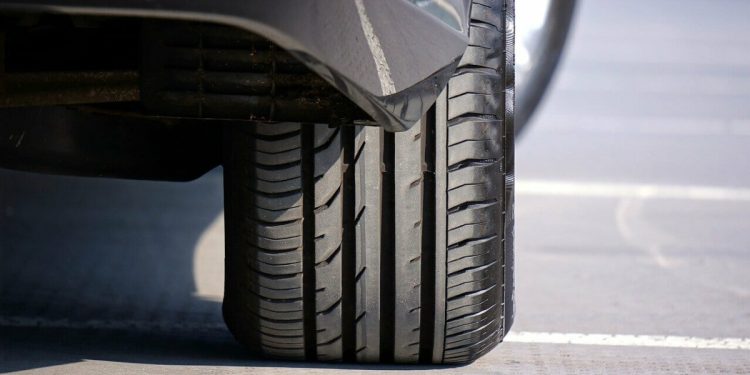In 2019-20, 69,000 tonnes of used tyres in Australia were used in home markets, and 263,000 tonnes were used in international markets.
Despite being a small component of your vehicle, new tyres play a critical role in ensuring your safety on the road. They are, however, one of the most overlooked elements of vehicle maintenance. And failing to do so could result in a hefty fine or even the loss of your driver’s license.
Your tyres impact your safety, the safety of your passengers, and other road users. As the only link between your vehicle and the road, replacing them at the appropriate time is critical.
Read on to learn the seven signs you need new tyres.
1. Cracked Sidewalls
Tyres sidewalls are the exterior casing that protects tyres from damage. Cracks on the sidewalls are apparent and most visible.
So, why do sidewalls crack? Well, tyres naturally age, and this weakens the sidewalls. It loses elasticity, becomes brittle and eventually breaks.
Sidewalls also can crack due to:
Exposure to extreme heat and UV rays
Overinflation or underinflation of the tyre, or
Lengthy driving in constant rain
Cracked sidewalks are a strong indicator that you should start budgeting for new tyres.
2. Reduction of Tread Depth
Tires treads form an essential bond between your vehicle and the ground. Thus, if the tread is not deep enough, your car is at risk of losing traction or having an extended braking time.
Additionally, you may experience difficulties controlling the vehicle in wet weather. You should check tread depth during regular vehicle maintenance to safeguard your safety.
So, how do you determine the tread depth?
You can use a tread depth gauge to check whether your tyres are deep enough. Often, treadwear spreads unevenly through the grooves. Therefore, be sure to take measurements in several areas.
Additionally, tyres have an inbuilt marker to warn you when the tread is too low. If the depth of the tyre is below 1.6 millimetres, it might not be safe to drive.
3. Steering Wheel Vibration
Your vehicle should have a smooth ride if the tyres are properly inflated. But if you experience vibration in your steering wheel, it might be a sign you need to pay some attention to the wheel and tyres.
Though a vibrating steering wheel can be caused by a faulty shock absorber or wheel misalignment, it could also indicate that the tyres are worn out unevenly. Thus, it would be best if you found a mechanic to identify the cause of the problem.
If the vibration of the steering wheel is due to uneven tread wear, you may need to buy new tyres for your car to drive smoothly and safely.
4. Bead Damage
Tyre’s bead is the edge of a tyre that sits on the wheel.
This part is responsible for creating and maintaining a seal that holds air. Thus, the air pressure keeps the bead properly sitting in this groove when the tyres are properly inflated.
The rubber bead is reinforced with copper, steel or any other strong band to maintain the seal.
However, driving under or overinflated tires can cause the bead to slip and eventually cause damage. Additionally, improper installation of tyre beads can hasten their deterioration.
So, how can you identify a damaged tyre bead?
If there is a leak and you can’t identify a puncture, crack, or leaky valve, the bead could have issues. If the bead bundle is damaged, no attempt should be made to repair it. It would help if you considered buying new tyres.
5. Ageing Tyres
Ageing is inevitable, and as tyres get old, they will naturally become weak and start to disintegrate. As this happens, you may notice that the tyres are getting harder, more brittle and will eventually develop cracks.
On average, good quality tyres are expected to last three to five years. However, the road conditions, maintenance and driving style also influence how long a tyre lasts.
A driver is likely to be involved in a crash if the condition of the tyres is poor. Thus, it is wise to check the tyres’ health, including ageing or wearing.
Consider replacing ageing tyres to ensure your vehicle has the best grip.
6. Bulged Sidewalls
You may also identify worrisome bulges on the sidewalls of your tyres.
This is not a common issue and can be extremely difficult to notice. However, it is a sign that a tyre needs replacement.
Bulged tyres typically occur when a vehicle impacts an object on the road. Running over potholes or taking on a speed bump can also cause this tyre issue. Driving on a bulged tyre can increase the risk of blowout or delamination.
Thus, if you notice a bulged tyre, you should consider replacing it soon.
7. Strange Noise
Is your engine and braking system in good condition, but you are still experiencing strange noise?
Then you should get a professional to examine your tyre, which might be the source of the noise. Tyres can be damaged by potholes and bumps, thus causing strange noise when braking or taking a turn.
Additionally, a squeaking or thumping sound might indicate that the tread is low or worn out.
Though nothing can guarantee you won’t experience a breakdown on the road, constant car tyre maintenance can optimise your safety on the road.
Buy New Tyres if You Notice Any of the Above the Signs
Tyres are essential car components from a safety standpoint. But there are susceptible to wear and tear, thus becoming unworthy on the road. Thus, if you want to maintain your vehicle’s performance, don’t neglect to check for signs you need new tyres.
When you want to replace your tyres, check the product’s warranty and warranty period. Additionally, choose a tyre that matches your vehicle size, loading capacity, vehicle usage and speed.
Are you looking for authentic tyres? At Ozzytyres will get all tyre packages. Contact us to buy new tyres







